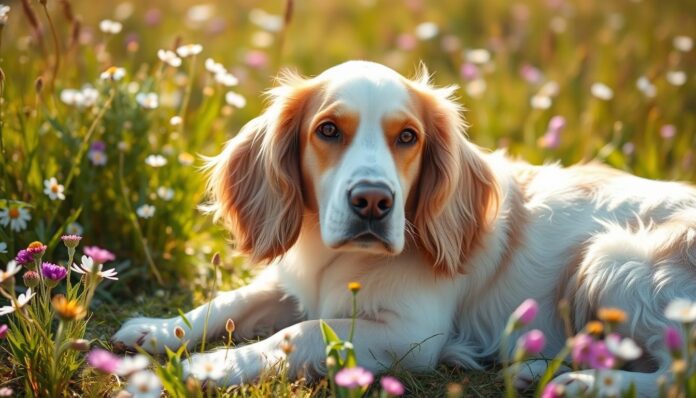Did you know the Clumber Spaniel Spanie is the largest in the Spaniel family? They stand 17 to 20 inches tall and weigh 55 to 85 pounds. This breed, from Nottinghamshire, England, is known for its hunting skills and loving nature. They are big but gentle, making great family pets and hunting companions.
The Clumber Spaniel looks unique with a long, low body and a big, noble head. Their coat is silky and comes in white, orange, and lemon. This breed has won many hearts, thanks to its history and royal support. Let’s explore why the Clumber Spaniel is a loyal and versatile friend for life.
Origins and Historical Background
The Clumber Spaniel’s story begins in the French Revolution’s chaotic times. The Duke of Noailles fled to England, bringing his spaniels. These dogs became the start of the Clumber Spaniel breed we love today.
The breed’s growth was linked to Clumber Park, the Duke of Newcastle’s estate in the late 18th century. William Mansell, the estate’s gamekeeper, worked hard to shape the breed. He focused on their size, temperament, and hunting skills.
Royal Patronage and Influence
British royalty helped the Clumber Spaniel become famous. Queen Victoria, King Edward VII, and King George V loved the breed. They used them in their hunting and bred them, making the Clumber Spaniel popular.
But, the breed faced a big challenge during World War I. It seemed like the Clumber Spaniel might disappear. King George V worked hard to save the breed at the Royal Kennels. His efforts helped the Clumber Spaniel come back and win the hearts of dog lovers everywhere.
Physical Characteristics and Breed Standards
The Clumber Spaniel is a unique and captivating breed. They stand 17 to 20 inches tall and weigh 55 to 85 pounds. Their body is long, low, and heavy-boned, with a massive head. Their dense, soft, and flat white coat may have lemon or orange markings, making them stand out.
Clumber Spaniels have a large head, floppy ears, and a tendency to drool. These traits add to their endearing and comical look. They are the largest in the spaniel family, with a muscular build and sturdy frame. Their appearance shows their history as hardworking hunting companions, able to navigate dense underbrush and retrieve game with ease.
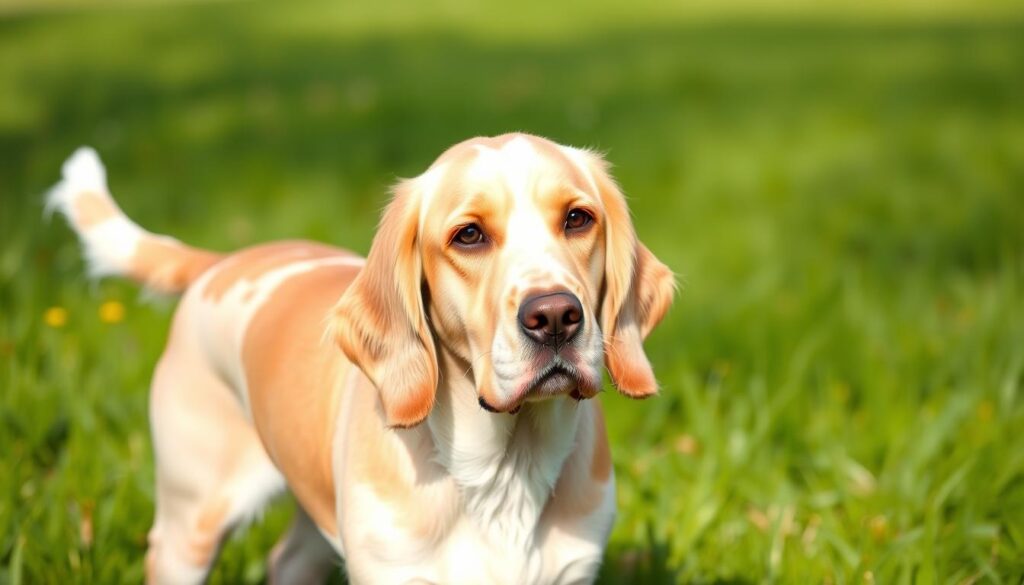
Clumber Spaniels are also known for their loving and loyal nature. They make great family companions, forming strong bonds with their human caretakers. They are described as gentle, friendly, and playful. With their medium-level intelligence and exercise needs, they can thrive in various living situations, making them a popular choice for both experienced and first-time dog owners.
The Unique Temperament of Clumber Spaniel Spanie
The Clumber Spaniel is known for being gentle, friendly, and playful. They are calm but never boring. These dogs bond strongly with their families and get along well with children, seniors, and other pets.
Gentle and Friendly Nature
Clumber Spaniels are gentle and easy to approach. They are patient and great with kids. They may be a bit shy at first but soon become friendly with everyone.
Interaction with Family Members
Clumber Spaniels love to be part of the family. They often bring “gifts” to greet their family members. They enjoy being around their loved ones and find happiness in everyday moments.
Behavior with Other Pets
Clumber Spaniels usually get along well with other pets. They are calm and gentle, making them good friends for dogs and cats. But, they need proper training and socialization to live peacefully with others.
In short, the Clumber Spaniel’s clumber spaniel temperament and clumber spaniel personality are all about being gentle, friendly, and family-loving. These qualities make them wonderful companions for any family, bringing love and loyalty into their homes.
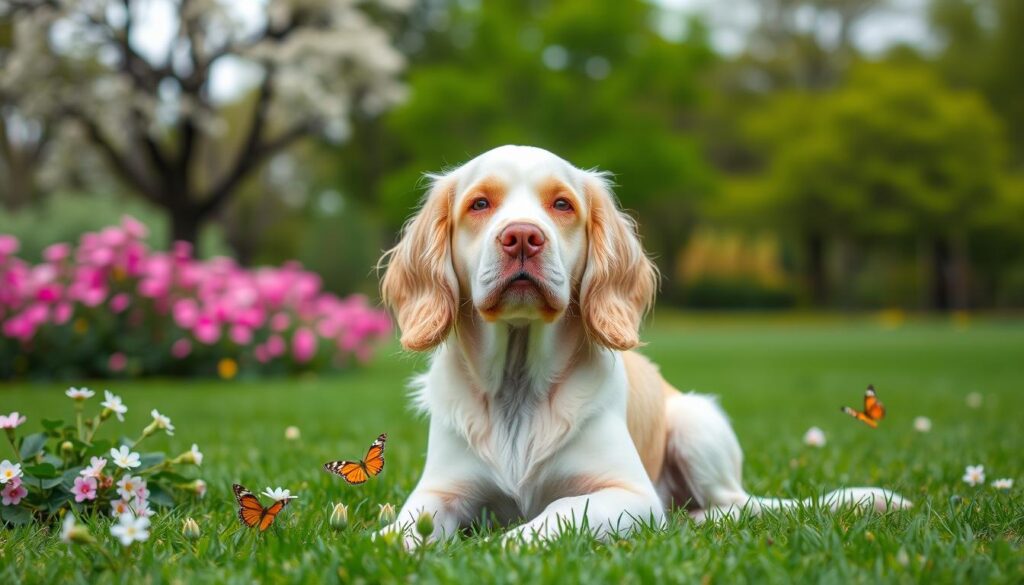
You May Like:- Are Bully Sticks Safe for Dogs: Benefits & Safety Guide
Exercise Requirements and Activity Levels
Clumber Spaniels are known for being calm and gentle. They need daily exercise to stay healthy. These dogs have a moderate need for exercise and are not too active.
They love a daily walk or 20-30 minutes of play. They can handle longer activities in cooler weather. Swimming and hiking are their favorite outdoor activities. But, they should avoid high-impact exercises to prevent injuries.
Clumber Spaniels can easily become overweight if they don’t get enough exercise. Obesity is a big problem in dogs, and they are at risk. It’s important to make sure they get enough physical activity and eat a balanced diet.
In short, Clumber Spaniels need moderate exercise and playtime. This makes them great for families or individuals who can provide regular, moderate activity. Meeting their exercise needs helps them live a happy and healthy life.
Training and Intelligence
The Clumber Spaniel is smart and usually listens well to training. But, they can also be independent and get bored easily. Positive methods like treats and praise work best, as they might get upset by harsh discipline.
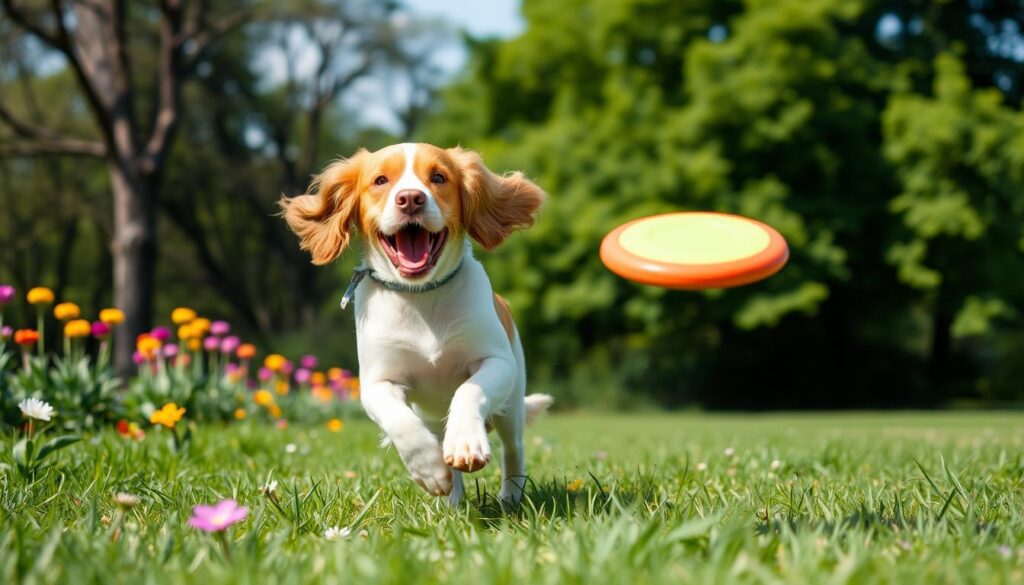
Basic Obedience Training
Teaching your Clumber Spaniel early and socializing them is important. They love to interact and learn new things. By using different exercises and commands, you can keep them interested and eager to learn.
With patience and regular practice, they can learn basic commands like sit, stay, come, and heel.
Socialization Needs
Socializing your Clumber Spaniel is vital, as they can be shy around new people. Introduce them to many people, animals, and places when they’re young. This will help them grow into confident, friendly friends.
Common Training Challenges
One big challenge is keeping Clumber Spaniels interested in training. They get bored with the same old drills. They need a varied routine to stay mentally sharp.
They might also take a bit longer to respond to commands. So, owners need to be patient and consistent.
With the right training, Clumber Spaniels can become well-behaved and obedient. Mix up their training, use positive methods, and give them lots of socialization. This will help overcome any challenges and show off their intelligence and gentle nature.
Grooming and Maintenance Needs
Clumber Spaniels shed a lot, so they need regular clumber spaniel grooming to keep their coats in good shape. Brushing them every day helps manage the shedding and keeps their coat silky and dense. They also need occasional baths, regular nail trims, and ear cleaning to avoid infections and stay well-groomed.
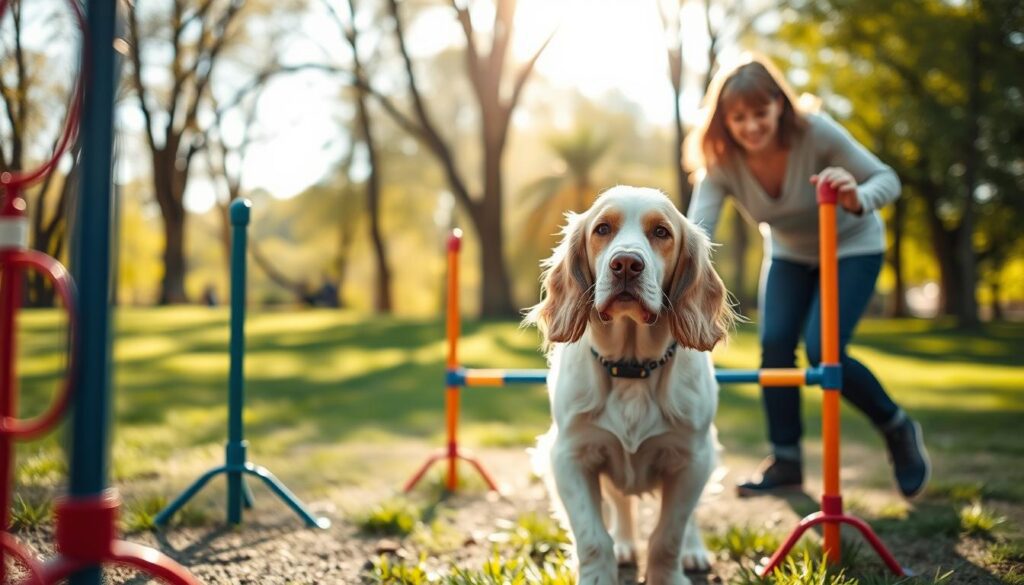
Good clumber spaniel care is not just about their coat. These dogs also need help with their dental health. Their tendency to drool means owners have to clean up more often to keep their homes clean.
- Daily brushing to control shedding and maintain coat health
- Occasional baths to keep the coat clean and prevent odors
- Regular nail trims to ensure proper foot health
- Ear cleaning to prevent infections
- Attention to dental hygiene to prevent dental issues
- Frequent cleaning to manage drooling
| Grooming Task | Frequency |
|---|---|
| Brushing | Daily |
| Bathing | Occasional |
| Nail Trims | Regular |
| Ear Cleaning | Regular |
| Dental Care | Ongoing |
| Cleanup (Drooling) | Frequent |
Health Considerations and Life Expectancy
The clumber spaniel is a gentle and loving breed. They have some health issues that owners need to watch out for. These dogs usually live between 10 to 12 years. They are mostly healthy but can get sick with certain conditions.
Common Health Issues
Clumber spaniels often face hip dysplasia, a genetic problem that hurts their joints. They can also get elbow dysplasia and eye problems like cataracts. Another big issue is intervertebral disc disease (IVDD), which can cause back pain and even paralysis.
Preventive Care Measures
- Regular vet visits and tests for hips, elbows, and eyes
- DNA tests for PDP-1 to find carriers
- Keeping them at a healthy weight to avoid joint problems
Dietary Requirements
Clumber spaniels tend to eat too much. They need a balanced diet to stay healthy. It’s important to feed them right to avoid obesity and related health issues. Owners should talk to their vet about the best food and how often to feed their clumber spaniel.
Living with a Clumber Spaniel
The Clumber Spaniel fits well into many homes, but they love being near their families. They don’t do well in kennels and prefer to stay indoors. These dogs are quiet and make great friends for people new to owning pets.
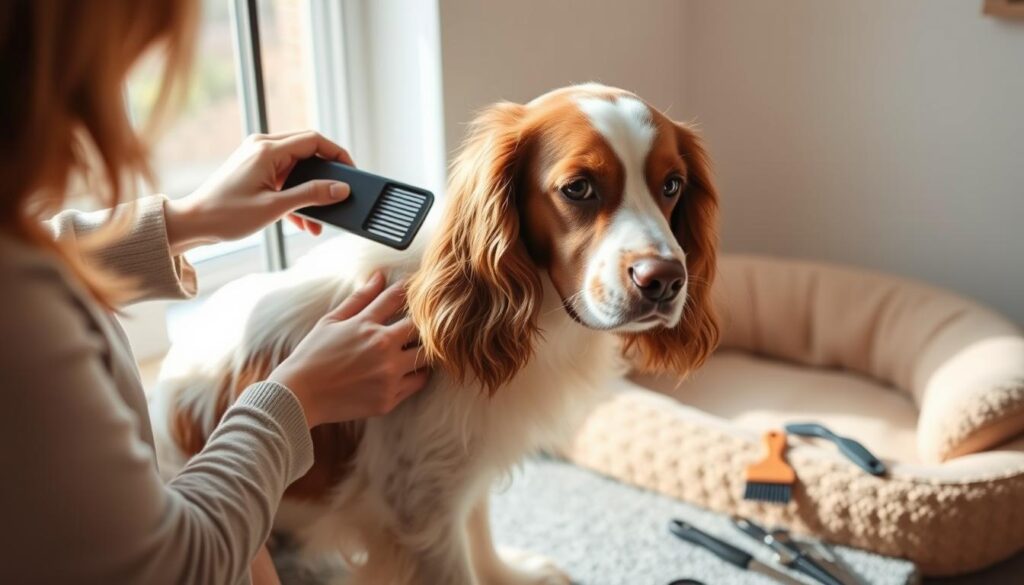
Clumber Spaniels have a habit of chewing, so they need to be watched to avoid eating things they shouldn’t. They love to find soft, cozy spots to rest and relax.
Clumber Spaniels are great at clumber spaniel home life and form strong bonds with their families. They are patient, gentle, and get along well with kids, seniors, and other pets. Their calm nature and moderate exercise needs make them perfect pets for many homes.
- Adapts well to various living situations but prefers to be close to family
- Not suited for kennel life, thrive as indoor pets
- Generally quiet and good for first-time dog owners
- Tend to chew and may require supervision
- Love comfort and seek out soft resting places
Hunting and Sporting Capabilities
The clumber spaniel has a rich hunting background, being great at bird hunting. Their keen nose and stamina are perfect for the field. Their strong build lets them move easily through thick brush, making them great for upland game hunting.
Even though clumber spaniels are friendly, they have a strong prey drive. This might not be good for homes with pet birds. They are very determined when chasing small game. It’s important to train them well to live peacefully with other pets.
| Hunting Capabilities | Sporting Capabilities |
|---|---|
|
|
Clumber spaniels are also great at sports. They are agile, athletic, and easy to train. With the right training, they can do well in many sports, like agility and field trials.
Choosing a Clumber Spaniel Puppy
When looking for a clumber spaniel puppy, it’s key to pick a trusted breeder. They should do health checks. These dogs need lots of grooming and might face health problems, so owners must be ready to care for them.
Getting a clumber spaniel from a rescue is a great choice too. These dogs usually have some training and are ready to find a home.
Clumber spaniel puppies need to be watched closely because they like to chew on things. It’s important to make sure their home is safe and secure.
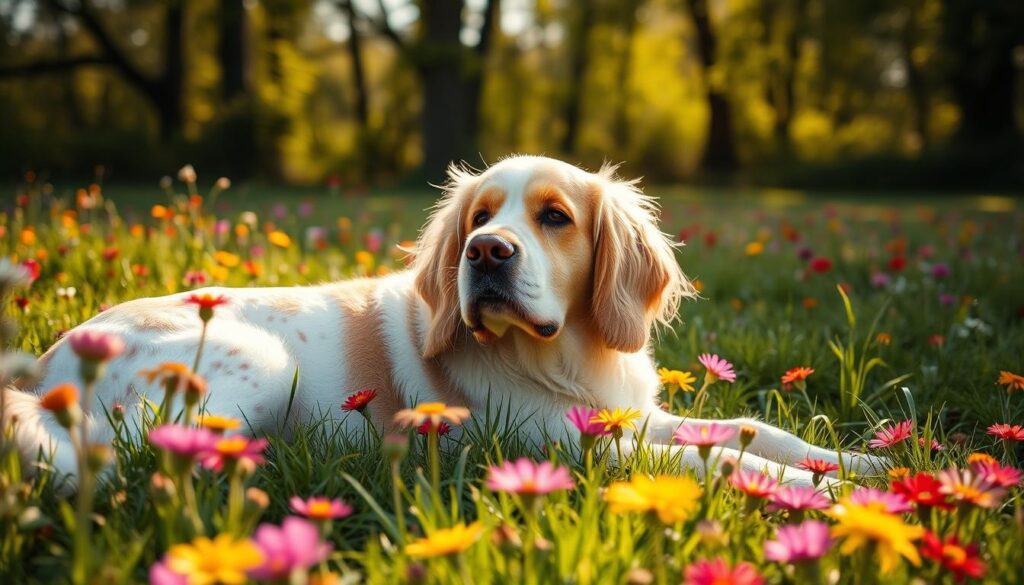
| Characteristic | Details |
|---|---|
| Size | Medium to large, standing 19-21 inches tall and weighing 55-85 pounds |
| Lifespan | 10-12 years |
| Coat | Long, dense, and silky, with various shades of white, orange, and lemon |
| Health Considerations | Prone to conditions like hip dysplasia, elbow dysplasia, and eye problems |
| Temperament | Gentle, affectionate, intelligent, and loyal |
| Exercise Needs | Moderate |
| Grooming | Regular brushing and professional grooming every 6-8 weeks |
When picking a clumber spaniel puppy, look for a breeder who does health checks and knows the breed’s needs. With the right care and commitment, these dogs can be great family pets.
Conclusion
The Clumber Spaniel is a special breed. They are great at hunting and are also very gentle. Their history goes back to the French Revolution, thanks to royal support.
These dogs need regular exercise and grooming. They also need consistent training. This shows how much care they need to stay happy and healthy.
Despite some health issues, Clumber Spaniels are very friendly and loving. They are great with families because of their hunting skills and gentle nature. Breeders and owners who know a lot about the breed help keep it special.
If you’re looking into the clumber spaniel breed overview or want to adopt one, they are a wonderful choice. They need care and commitment, but they are very rewarding. With the right training and healthcare, they become loving family members.
FAQ
What are the key characteristics of the Clumber Spaniel breed?
Clumber Spaniels are medium to large dogs. They are great at hunting and have a strong sense of smell. They have a sturdy build and a white coat with lemon or orange spots.
What is the history and origin of the Clumber Spaniel?
The Clumber Spaniel’s history starts with the French Revolution. The Duke of Noailles sent his spaniels to England to keep them safe. They were developed at Clumber Park in the late 18th century.
British royalty, like Queen Victoria and King George V, loved and bred them.
How would you describe the Clumber Spaniel’s temperament?
Clumber Spaniels are friendly and playful. They are calm but not dull. They love their family and get along well with kids, seniors, and other dogs.
They might be shy at first but soon warm up to new people.
What are the exercise and activity requirements for a Clumber Spaniel?
Clumber Spaniels need daily walks or playtime for 20-30 minutes. They have lots of endurance and enjoy swimming and hiking.
How trainable are Clumber Spaniels, and what are some common training challenges?
Clumber Spaniels are smart and easy to train, but they can be independent. Positive training works best because they are sensitive. They might get bored with the same drills and take time to respond to commands.
What are the grooming and maintenance requirements for a Clumber Spaniel?
Clumber Spaniels shed a lot and need daily brushing. They also need baths, nail trims, and ear cleaning to stay healthy. Keeping their teeth clean is important too.
What are the common health concerns and life expectancy of Clumber Spaniels?
Clumber Spaniels live 10-12 years. They can get hip dysplasia, elbow dysplasia, and eye problems. They are also prone to back issues and swallowing foreign objects.
Regular vet visits and tests are key to their health.
How do Clumber Spaniels adapt to different living situations?
Clumber Spaniels do well in many homes but love to be with their family. They’re not good in kennels and prefer to be indoors. They are quiet and good for first-time owners but can chew a lot.
What are the hunting and sporting capabilities of Clumber Spaniels?
Clumber Spaniels are great at hunting, thanks to their strong nose and endurance. They can move through thick brush easily. They’re excellent hunting dogs but also happy as family pets.
What should I consider when choosing a Clumber Spaniel puppy?
When picking a Clumber Spaniel puppy, choose a reputable breeder who checks for health issues. Be ready for their grooming needs and possible health problems. Adopting from a rescue is also an option.


